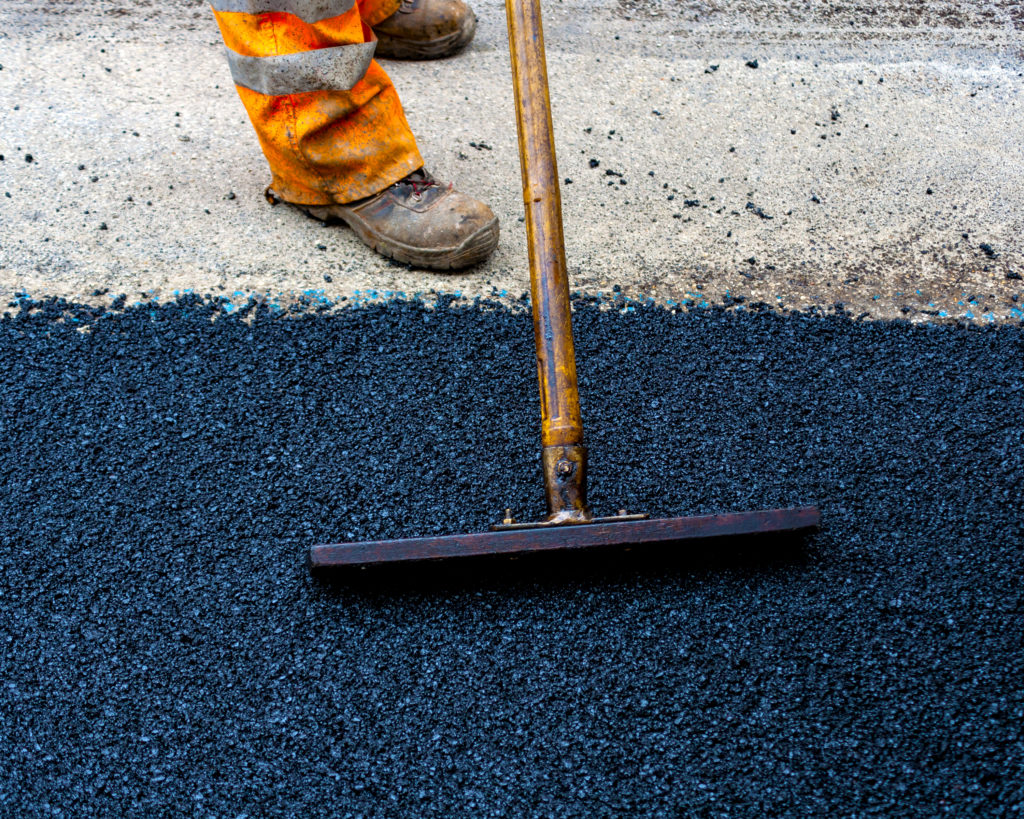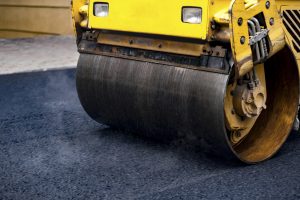Boost the Feel And Look of Your Home with Expert Commercial Parking Great Deal Paving
Boost the Feel And Look of Your Home with Expert Commercial Parking Great Deal Paving
Blog Article
Opening the Secrets of Warm Mix Asphalt Modern Technology
Discovering the depths of warm mix asphalt modern technology reveals a globe where thorough procedures and specific formulas merge to form our roads and facilities. The fusion of binders, fillers, and aggregates isn't just a building and construction task but a calculated orchestration of longevity and performance.
Significance of Warm Mix Asphalt
Hot Mix Asphalt plays a crucial function in modern-day infrastructure advancement because of its durability and cost-effectiveness. As the most commonly made use of leading material for roads, freeways, and parking area, Warm Mix Asphalt uses a series of advantages that add to its value in building and construction tasks. One essential benefit is its capability to endure heavy web traffic lots and severe weather, supplying a lasting and dependable surface area for transport networks. Furthermore, Warm Mix Asphalt is affordable in both first construction and long-lasting upkeep, making it a favored choice for several framework projects.
The sturdiness of Hot Mix Asphalt comes from its composition, which consists of aggregates, binder, and filler products that are very carefully selected and mixed to meet details performance demands. This exact combination leads to a versatile and solid sidewalk that can sustain constant use without significant wear and tear. In Addition, Hot Mix Asphalt is 100% recyclable, additional enhancing its sustainability and environmental benefits. Generally, the relevance of Warm Mix Asphalt in facilities growth can not be underrated, as it remains to be a foundation of modern building and construction methods.
Components of Asphalt Mixes
The make-up of asphalt mixes consists of very carefully chosen accumulations, binder, and filler products that are crucial for achieving certain performance needs. Aggregates are the main component of asphalt blends, supplying strength and stability. The binder, usually bitumen or asphalt cement, holds the aggregates together and supplies adaptability and toughness to the mix.
The combination and proportion of these elements play a significant function in determining the quality and performance of the asphalt mix. Designers very carefully design the mix to fulfill specific demands, thinking about factors like traffic volume, climate problems, and pavement life expectancy. Correct choice and balancing of accumulations, binder, and fillers are necessary for producing long lasting, long-lasting asphalt pavements.
Combining and Production Techniques

When the accumulations are chosen, the binder, commonly asphalt concrete, is included in bind the materials together. The binder's high quality and quantity considerably impact the mix's adaptability, strength, and resistance to ecological factors. In addition, fillers like moisturized lime or Portland cement may be incorporated to enhance particular features of the asphalt mix, such as its workability or wetness resistance.
During manufacturing, the aggregates and binder are warmed, typically between 250-325 ° F(121-163 ° C ), to promote blending and make sure appropriate finish of the aggregates. The mixing process must be extensive to accomplish an uniform blend that advertises the desired performance features of the asphalt. Various methods, such as set blending or drum blending, are employed to attain high-grade and regular asphalt blends for construction projects.
Elements Affecting Asphalt Efficiency
Aspects influencing asphalt efficiency incorporate a variety of variables that affect the durability, longevity, and overall top quality of asphalt pavements. One essential factor is the quality of products used in the asphalt mix. The kind and resource of accumulations, the binder quality, and the additives all play a significant role in establishing the efficiency of the asphalt pavement. The gradation of aggregates is crucial as it influences the mix's security, workability, and resistance to cracking navigate to these guys and rutting.

Design considerations, such as sidewalk density and water drainage, are crucial in guaranteeing the long-term efficiency of the asphalt sidewalk. By meticulously thinking about these designers, specialists and aspects can optimize asphalt performance and enhance the solution life of pavements.
Lasting Practices in Asphalt Modern Technology

WMA enables for the manufacturing and placement of asphalt blends at lower temperatures compared to typical hot-mix asphalt, resulting in reduced power usage and greenhouse gas exhausts. The use of porous asphalt mixes can aid mitigate stormwater overflow problems by enabling water to penetrate with the pavement and right into the ground, promoting all-natural water filtration and recharge procedures.
Final Thought
In verdict, warm mix asphalt modern technology plays an essential function in contemporary infrastructure development because of its toughness and cost-effectiveness. By carefully balancing components, employing appropriate mixing strategies, and thinking about different elements, designers can create high-grade asphalt blends that hold up web link against rush hour lots and severe climate condition. Accepting lasting techniques, such as making use of recycled materials and warm-mix modern technologies, even more boosts the ecological friendliness of asphalt technology.
Blending and manufacturing strategies in warm mix asphalt modern technology include the exact combination and handling of aggregates, binder, and fillers to create a high-performance and sturdy asphalt mix.Aspects influencing asphalt efficiency include a variety of variables that impact the durability, long life, and overall top quality of asphalt pavements. Lasting methods in asphalt technology incorporate different initiatives intended at reducing the ecological impact of asphalt manufacturing and paving procedures. By incorporating recovered asphalt sidewalk (RAP) and recycled asphalt tiles (RAS) right into brand-new asphalt blends, the sector can considerably minimize the consumption of raw materials and power, while also lowering landfill waste.
WMA enables click to read more for the manufacturing and placement of asphalt mixes at reduced temperatures compared to standard hot-mix asphalt, resulting in minimized energy consumption and greenhouse gas emissions.
Report this page